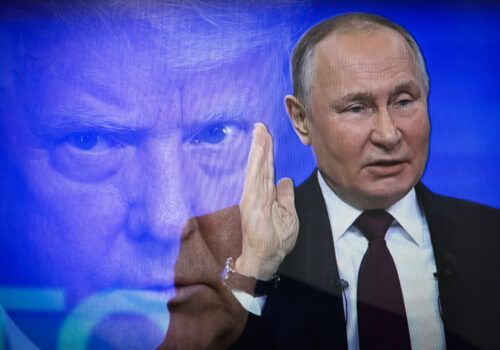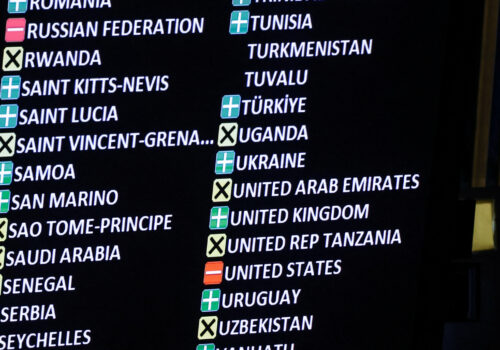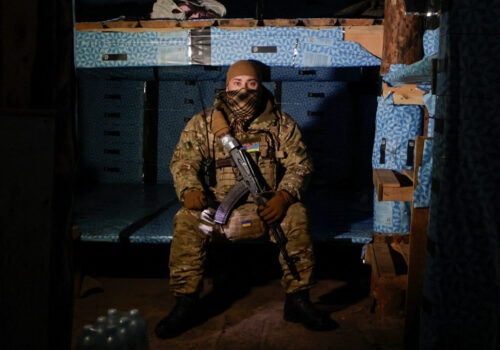World News – 2024 – Video Playlist | Video Playlists | Sites: | newsandtimes.org | links-newsandtimes.com | worldwebtimes.com | southcaucasusnews.com | russianworld.net | jossica.com | octobersurprise2016.org | bklyntimes.com | oceanavenuenews.com | fbireform.com | bloggersunite.net | octobersurprise-2024.org | Trump-News.org | Audio-Posts.com | Bklyn-NY.com | Posts Review – newsandtimes.org
In the month since Donald Trump’s inauguration, the foreign policy of the new US administration has focused on efforts to broker a peace deal between Ukraine and Russia. This admirable initiative is in its infancy as daily trial balloons are floated. Currently, the Trump White House appears to favor a compromise peace that would establish a neutral Ukraine without clear security guarantees from the country’s Western partners. This formula is sometimes called “Finlandization,” in reference to Finland’s experience as a neutral front line nation during the Cold War.
The Cold War status of Finland reflects the realities of the country’s relationship with the USSR. In the aftermath of the August 1939 Nazi-Soviet Pact and the outbreak of World War II, the Soviet authorities began demanding territory from the Finns. The Kremlin accompanied this with a disinformation campaign referring to Finland’s leaders as a “reactionary fascist clique.”
In November 1939, the Red Army attacked Finland. The Finns fought bravely in a three-month winter war, inflicting over 300,000 Soviet casualties while suffering around 70,000 themselves. Nonetheless, the USSR eventually prevailed and annexed more than ten percent of Finnish territory. This history will sound eerily familiar to today’s Ukrainians.
In the decades after World War II, Finland was handcuffed to neutrality via a treaty with Moscow, but remained an independent state with a market economy. The constraints placed on Finland during this period prevented the country’s integration into the Euro-Atlantic community and came to be known as Finlandization. In essence, Finland was forced to cede land and accept a Kremlin-friendly form of geopolitical neutrality in exchange for nominal independence.
Stay updated
As the world watches the Russian invasion of Ukraine unfold, UkraineAlert delivers the best Atlantic Council expert insight and analysis on Ukraine twice a week directly to your inbox.
Some in Washington DC and elsewhere now see the Finlandization format of neutrality as a suitable model for Ukraine. This includes influential members of the Trump administration. However, supporters of this approach ignore the obvious differences between Soviet policy toward Finland and the Putin regime’s objectives in Ukraine. While the USSR had limited territorial ambitions in Finland and was far more focused on the Cold War competition with the United States and Western Europe, today’s Russia is fully committed to erasing Ukrainian statehood and national identity.
The most powerful indictment of Finlandization has come from Finland itself. Following the fall of the Soviet Union, the Finns moved quickly to end decades of neutrality, joining the European Union in 1995. When Russia invaded Ukraine in February 2022, the Finnish authorities went even further and applied for NATO membership. Finland’s accession to the alliance in 2023 marked the final stage in the country’s rejection of Finlandization.
Instead of imposing neutrality on Ukraine, the country’s partners should seek to create a security environment that will prevent further Russian aggression and allow Ukrainians to define their own future. After eleven years of Russian military aggression and three years of full-scale invasion, pressuring Ukraine to accept Finlandization on the Kremlin’s terms would be the equivalent of forcing a victim of abuse to live with their abuser. Such an unjust settlement would be doomed to fail and could also significantly undermine the international standing of the United States for years to come.
Eurasia Center events

Despite the evident problems with a peace deal that imposes neutrality on Ukraine, the new US administration has begun the negotiating process with Russia by proactively offering a series of concessions to the Kremlin such as ruling out Ukrainian NATO membership. US officials appear intent on avoiding anything that might offend the Russians as they seek to provide Putin with a face-saving off ramp. This approach is unlikely to result in a viable long-term peace deal. On the contrary, it risks emboldening Putin and encouraging him to increase his demands.
The alternative to Kremlin-friendly neutrality is clear. Ukraine seeks binding security guarantees from its Western partners and an invitation to join NATO. Kyiv’s vision for a sustainable peace offers obvious advantages for the West. At a time when the US is calling on Europeans to take greater responsibility for their own security, closer defense ties with Ukraine would be a major asset. With more than a million soldiers and unique combat experience on the twenty first century battlefield, the inclusion of Ukraine would dramatically increase the size and effectiveness of NATO forces in Europe while enabling the US to potentially withdraw troops.
Integrating Ukraine into the Western security architecture would bring lasting peace to Europe because it would project strength to Russia, which is the only language Vladimir Putin understands. Striking a temporary peace deal by appeasing aggression is easy, as Neville Chamberlain demonstrated at Munich in 1938. However, the long-term consequences are likely to be disastrous. The Trump administration appears well aware of this and says it is committed to achieving peace through strength. The question is whether this principle will now be applied to negotiations with Russia over the fate of Ukraine.
Brian Mefford is a senior nonresident fellow at the Atlantic Council. He has lived and worked in Ukraine since 1999.
Further reading
The views expressed in UkraineAlert are solely those of the authors and do not necessarily reflect the views of the Atlantic Council, its staff, or its supporters.

The Eurasia Center’s mission is to enhance transatlantic cooperation in promoting stability, democratic values and prosperity in Eurasia, from Eastern Europe and Turkey in the West to the Caucasus, Russia and Central Asia in the East.
Follow us on social media
and support our work
The post The Finlandization fallacy: Ukrainian neutrality will not stop Putin’s Russia appeared first on Atlantic Council.
World News – 2024 – Video Playlist | Video Playlists | Sites: | newsandtimes.org | links-newsandtimes.com | worldwebtimes.com | southcaucasusnews.com | russianworld.net | jossica.com | octobersurprise2016.org | bklyntimes.com | oceanavenuenews.com | fbireform.com | bloggersunite.net | octobersurprise-2024.org | Trump-News.org | Audio-Posts.com | Bklyn-NY.com | Posts Review – newsandtimes.org





